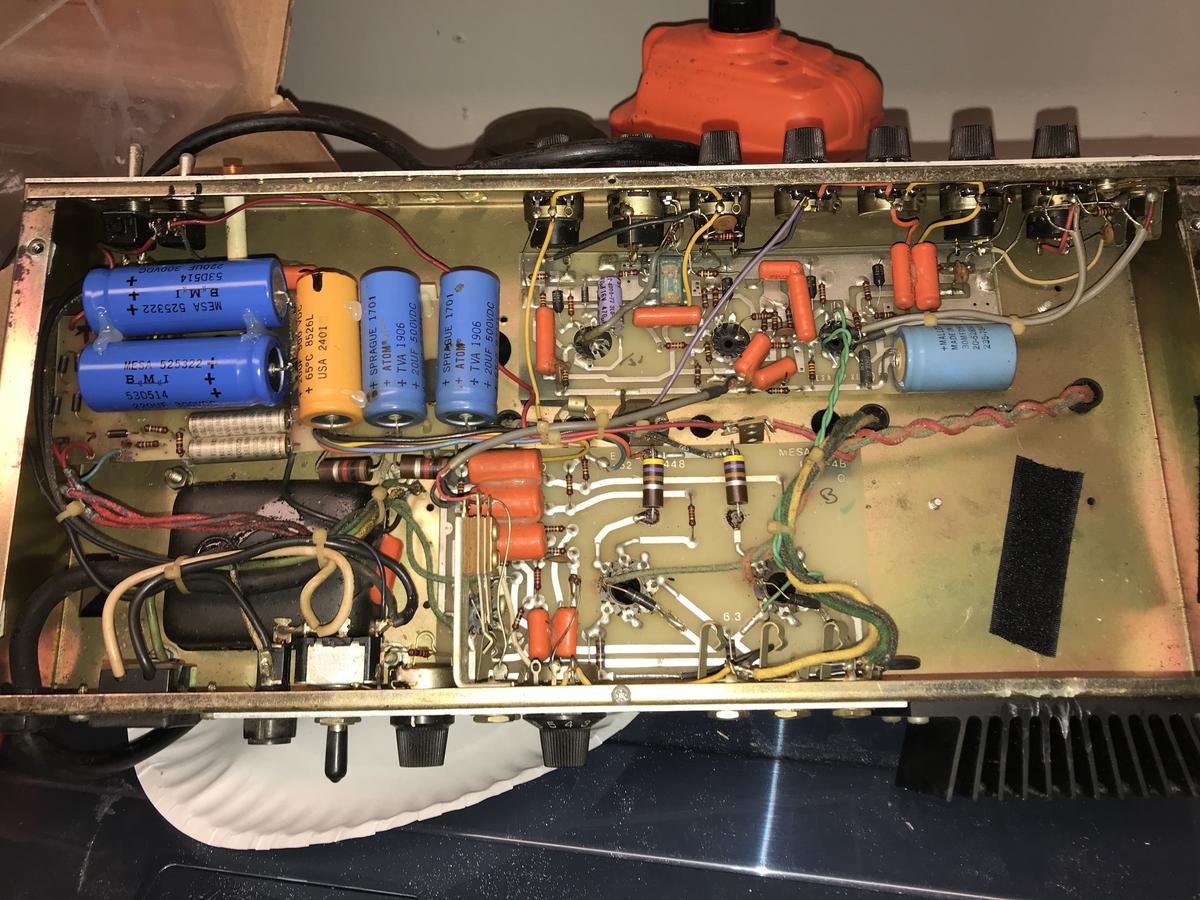bluelair
Member
- Joined
- Mar 17, 2018
- Messages
- 5
- Reaction score
- 0
I bought a nonworking Mark IIB that was blowing fuses. Immediately determined the PT was bad, replaced with a Mercury 80142 recommended by Mesa.
1. Powered on (with Variac) power on and amp produced sound, but it was sounding very poor sounding, sound was scratchy, harsh, would oscillate, and needed high volume and strong strum on the guitar to make any.
2. Next changed out the six large caps with Mesa and Sprague caps, powered on (always use a variac). (this is a before pic).

3. No improvement.
4. Next changed all six tubes (2 6l6GC, 4 12ax7) with known good ones.
5. No improvement.
6. Checked grid resistors on the power tubes, they tested within spec on the schematic (470 and 2.2k ohms)
7. Other observations: Pots do not crackle, they are smooth and silent. Ground switch is set to center setting.
I also noticed when I am powered up at 120 vac, then I use the variac knob to power down, at around 30-40 volts on the variac (on the way down), the amp wakes up and sounds like it should for about 3-4 seconds, I get perfect clean tones and it sounds great, as if in that "zone" of shutting down it's getting exactly what it needs. Does this tell us anything? I only noticed this after I replaced the tubes. I can do it repeatedly, power on slowly with variac, come up to power, get the harsh, grating sound, then back down the variac, at around 40 volts, you hear the normal hum from the speaker intensify and you can strum and hear what it should sound like normally, then that sound fades away as if it's discharging after about 3-4 seconds.
What should I try next?
1. Powered on (with Variac) power on and amp produced sound, but it was sounding very poor sounding, sound was scratchy, harsh, would oscillate, and needed high volume and strong strum on the guitar to make any.
2. Next changed out the six large caps with Mesa and Sprague caps, powered on (always use a variac). (this is a before pic).

3. No improvement.
4. Next changed all six tubes (2 6l6GC, 4 12ax7) with known good ones.
5. No improvement.
6. Checked grid resistors on the power tubes, they tested within spec on the schematic (470 and 2.2k ohms)
7. Other observations: Pots do not crackle, they are smooth and silent. Ground switch is set to center setting.
I also noticed when I am powered up at 120 vac, then I use the variac knob to power down, at around 30-40 volts on the variac (on the way down), the amp wakes up and sounds like it should for about 3-4 seconds, I get perfect clean tones and it sounds great, as if in that "zone" of shutting down it's getting exactly what it needs. Does this tell us anything? I only noticed this after I replaced the tubes. I can do it repeatedly, power on slowly with variac, come up to power, get the harsh, grating sound, then back down the variac, at around 40 volts, you hear the normal hum from the speaker intensify and you can strum and hear what it should sound like normally, then that sound fades away as if it's discharging after about 3-4 seconds.
What should I try next?






















